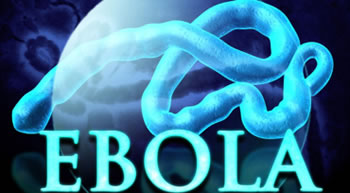Difference between Ebola and AIDS
Key Difference: The main difference AIDS and Ebola is the fact that a person that has been infected with HIV can live for more than 10 years without even getting AIDS. However, a person infected with Ebola will start to show symptoms within 2 to 21 days.
 Ebola and AIDS are two different illnesses that can attack humans. Ebola is caused by the ebolavirus, whereas the Acquired Immunodeficiency Syndrome (AIDS) is caused by the human immunodeficiency virus (HIV). While AIDS is actually the last stage of the infection caused by HIV, the term is often used to the entire illness.
Ebola and AIDS are two different illnesses that can attack humans. Ebola is caused by the ebolavirus, whereas the Acquired Immunodeficiency Syndrome (AIDS) is caused by the human immunodeficiency virus (HIV). While AIDS is actually the last stage of the infection caused by HIV, the term is often used to the entire illness. 
|
|
Ebola |
AIDS |
|
Known as |
Ebola virus disease (EVD), Ebola hemorrhagic fever (EHF) |
Acquired Immunodeficiency Syndrome (AIDS) |
|
Caused by |
a virus of the family Filoviridae, genus Ebolavirus:
|
A lentivirus; subgroup of retrovirus.
Two main types of viruses:
|
|
First Discovered |
In 1976 near the Ebola River in what is now the Democratic Republic of the Congo |
First clinically observed in 1981 in the United States. However dates back to 1920s in what is now the Democratic Republic of the Congo. |
|
Natural Hosts |
Fruit bats of the Pteropodidae family |
HIV-1 is related to viruses found in chimpanzees and gorillas living in western Africa, while HIV-2 viruses are related to viruses found in the endangered west African primate sooty mangabey. |
|
Transmission |
|
|
|
Incubation period (the time interval from infection with the virus to onset of symptoms) |
2 to 21 days |
Up to 10 years, but can be increased with treatment. |
|
Symptoms |
Fever, fatigue, muscle pain, headache and sore throat. Followed by vomiting, diarrhoea, rash, symptoms of impaired kidney and liver function, and in some cases, both internal and external bleeding. |
There are three main stages of HIV infection: acute infection, clinical latency and AIDS.
AIDS: pneumocystis pneumonia , cachexia in the form of HIV wasting syndrome, esophageal candidiasis, and respiratory tract infections. Systemic symptoms such as prolonged fevers, sweats (particularly at night), diarrhea, swollen lymph nodes, chills, weakness, and weight loss. Increased risk of developing Kaposi's sarcoma, Burkitt's lymphoma, primary central nervous system lymphoma and cervical cancer. |
|
Diagnosis |
Confirmation is made using the following investigations:
|
Confirmation is made using an enzyme-linked immunosorbent assay (ELISA) to detect antibodies to HIV-1.
If positive, it is followed by Western blot or, less commonly, an immunofluorescence assay (IFA).
Only considered HIV positive if both tests are positive. |
|
Treatment |
Rehydration with oral or intravenous fluids- and treatment of specific symptoms, improves rate of survival. |
Treatment consists of high active antiretroviral therapy (HAART) which slows progression of the disease. Treatment also includes preventive and active treatment of opportunistic infections. |
Image Courtesy: localtvkdvr.wordpress.com, homeboyzradio.co.ke









Add new comment